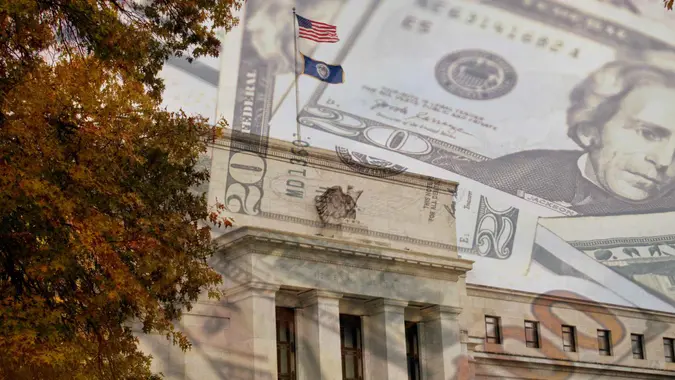Labor Shortage Forecast: 3 Main Factors That Could Delay Recovery for Years

Commitment to Our Readers
GOBankingRates' editorial team is committed to bringing you unbiased reviews and information. We use data-driven methodologies to evaluate financial products and services - our reviews and ratings are not influenced by advertisers. You can read more about our editorial guidelines and our products and services review methodology.

20 Years
Helping You Live Richer

Reviewed
by Experts

Trusted by
Millions of Readers
As the pandemic drags on, workers have been quitting at near-record rates — leaving more open positions than there are workers to fill them.
Jeanniey Walden, labor market expert and CMO of DailyPay, previously told GOBankingRates that there’s a significant imbalance in the U.S. labor market as the labor participation rate remains low while job openings have returned to pre-pandemic levels. “There’s speculation that the pandemic-driven decrease in labor participation rate is permanent,” Walden added.
JPMorgan chief global strategist David Kelly also believes that shortages will stretch into the new year, and possibly indefinitely. In a note, Kelly provided three reasons why we’re in a “great worker shortage,” as reported by Business Insider.
The Pandemic
Kelly noted that the latest data from the Bureau of Labor Statistics shows that 1.2 million didn’t look for work in November, respondents often citing the pandemic as the root cause. He attributed this outcome to a few potential indicators, such as a lack of available childcare or other care needs, a skills mismatch between available jobs and workers as well as those continuing to live off of savings.
More People Are Retiring
Every year, more baby boomers are reaching retirement age and leaving the workforce — or switching to part-time employment. Business Insider noted that the number of Americans over the age of 65 is outpacing the number of Americans between the ages of 16 and 64, causing that demographic population to actually reduce in total. According to Goldman Sachs researchers, 2.5 million people retired during the pandemic.
Another factor is that immigration has fallen below the Census Bureau’s projections of 1 million new immigrants per year. An estimated 2 million of the 3 million “missing” workers may be immigrants that never came to the U.S., Business Insider details.
Americans Are Wanting to Spend
As of October, per Business Insider, Americans are spending more on goods than ever before — with Kelly noting that savings from aid programs also pushed up the demand for goods and services.
Higher demand is “likely making the labor shortage even more extreme,” Kelly wrote. He also added that higher productivity, immigration reform and higher wages will help ease the shortages.
“All of these forces should gradually resolve the current excess demand for labor,” Kelly explains. “However, barring a recession, this process could take years.”
More From GOBankingRates
 Written by
Written by  Edited by
Edited by 

























